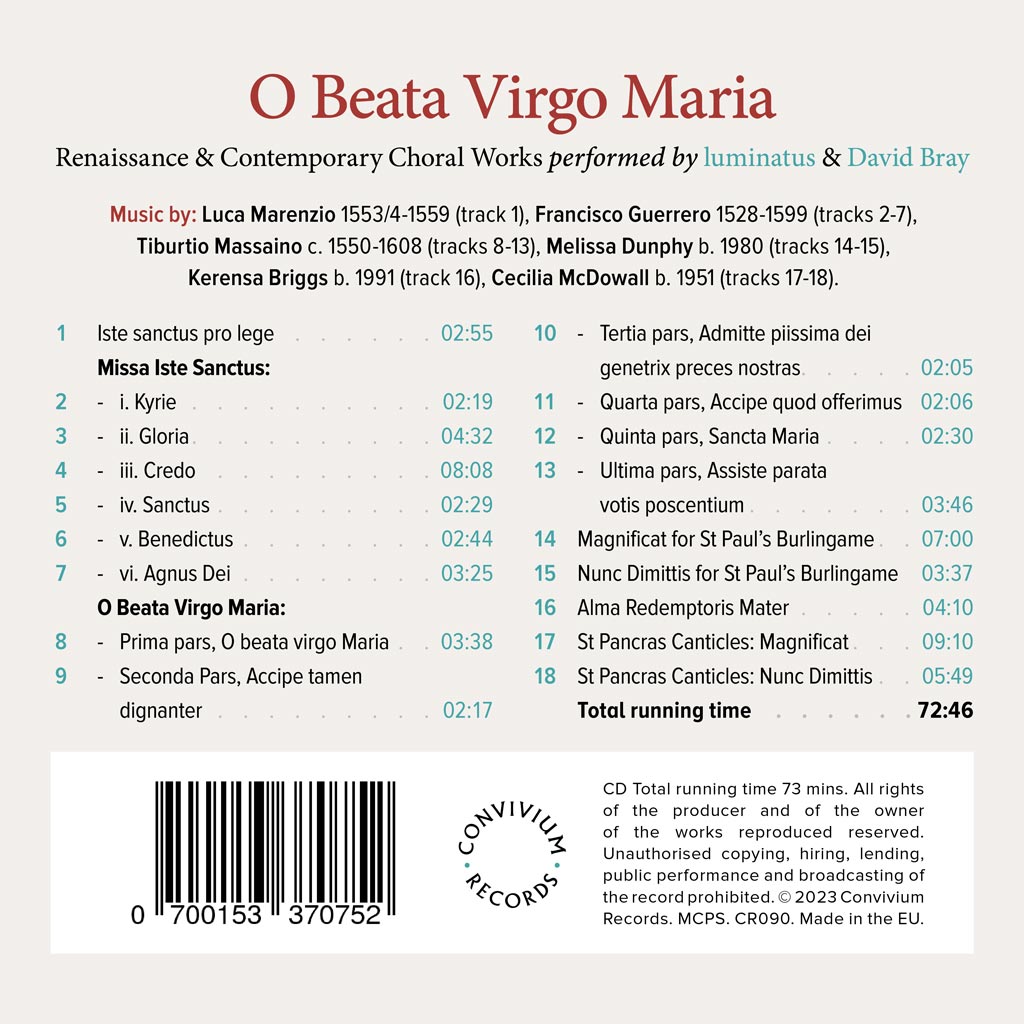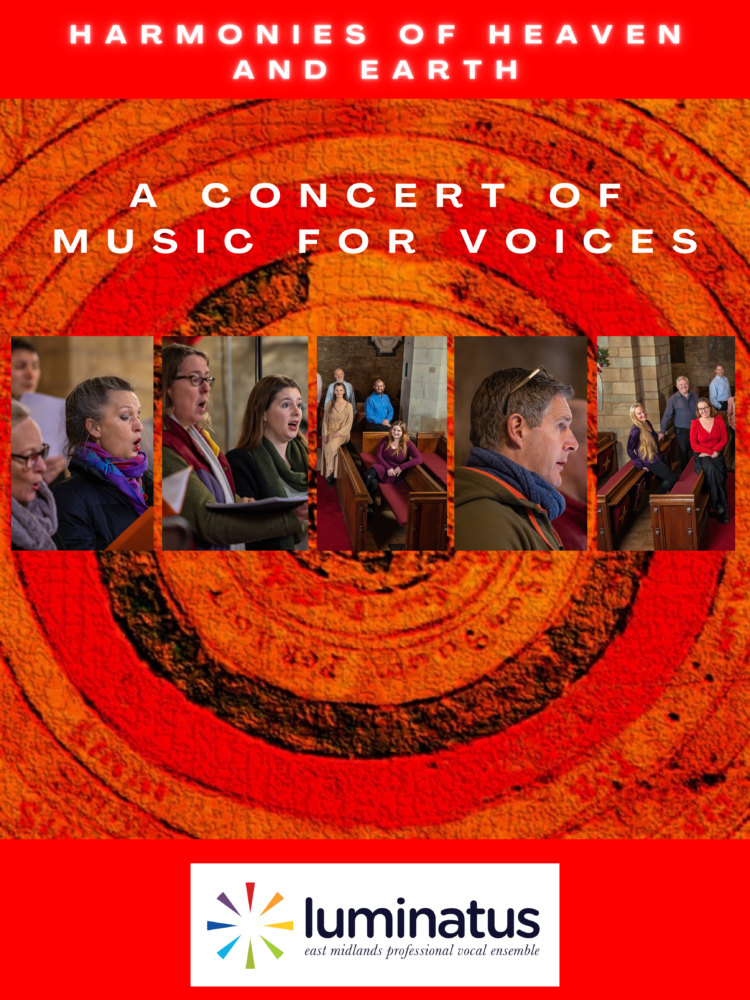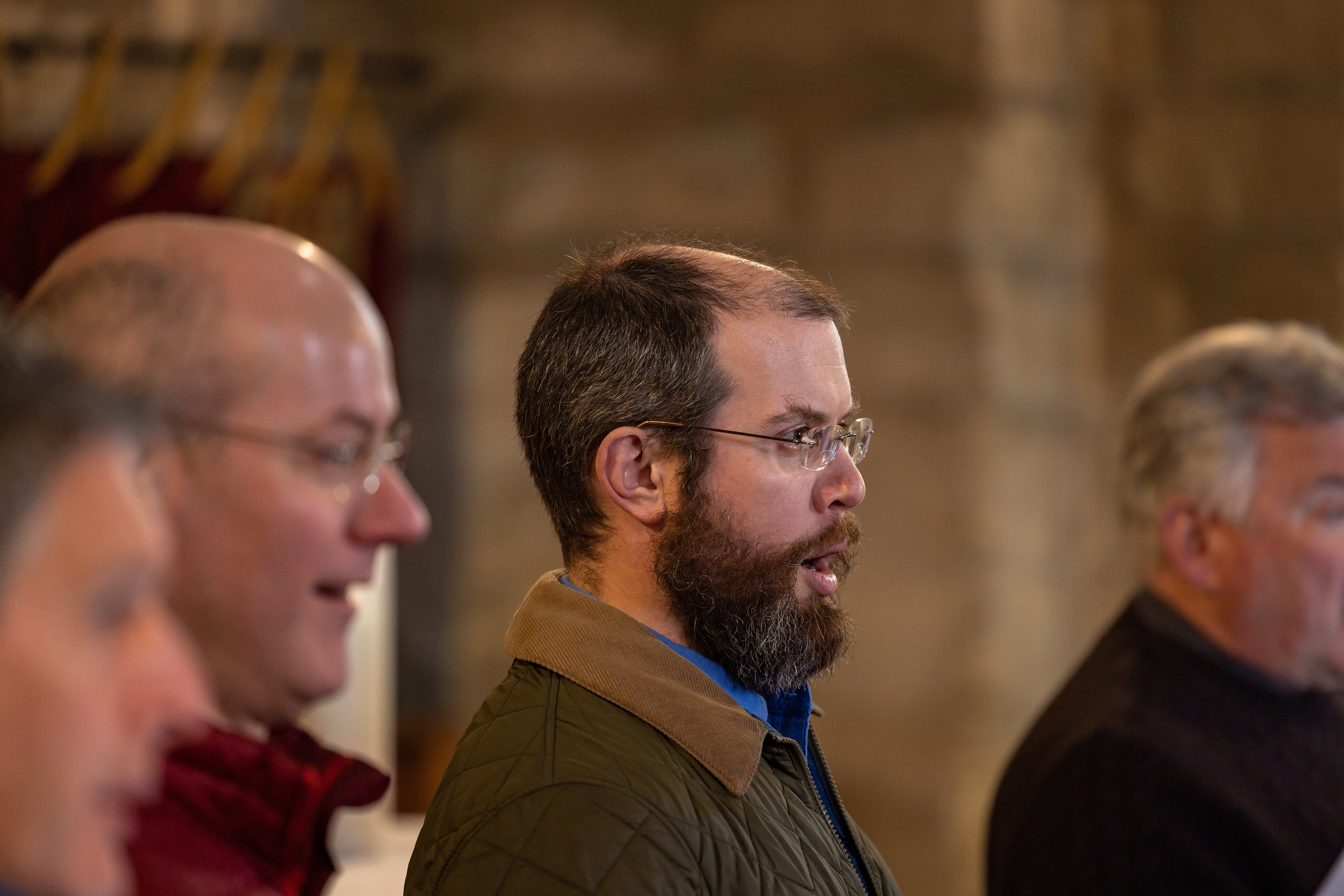O Beata Virgo Maria – Review by Laudate Magazine
“O Beata Virgo Maria is a fine disc with much to appeal to lovers of a cappella mixed-voice ensembles”

Review:
The singing is wonderful. luminatus (they prefer an initial lower-case letter) is a ‘small, but flexible group’ who specialise in little-known Renaissance music and in contemporary repertoire. This disc (73 minutes) is an excellent showcase for their a cappella sound, with its selection of previously unrecorded works from both their favoured musical domains.
The Renaissance repertoire begins with Luca Marenzio’s motet Iste sanctus pro lege and his contemporary Francisco Guerrero’s mass of the same name. The Programme Note does not point out the thematic connection between the two works, even separating the comments on Marenzio and Guerrero. However, the attentive listener will probably hear what is going on – for example, if we compare the beginnings of the motet and of the Kyrie.
The disc takes its name from the next motet, Tiburtio Massaino’s large-scale O Beata Virgo Maria (about 16 minutes, in six large sections or partes). Massaino (pre-1550 to post-1608) was an Augustinian monk, who worked in or visited a wide variety of locations including Rome, Salzburg and Prague. He was a prolific composer, but relatively little of his music has been recorded: O Beata is likely to inspire lovers of Renaissance music to explore more. Listeners may wish to visit https://www.prestomusic.com/classical/composers/5357–massaino to see else what is currently available.
Three women composers are represented in the remaining (five) tracks (again all a cappella): these contain Evening Canticles by Melissa Dunphy and by Cecilia MacDowall, and a very attractive and ambitious setting of Alma redemptoris mater by Kerensa Briggs (the mezzo solo being sung by Hannah Littleton).
McDowall’s five-part St Pancras Canticles were composed for the London Festival of Contemporary Church Music in 2017. They are impressive, although with a Magnificat lasting nine minutes and a Nunc Dimittis at nearly six they may serve more frequently as concert pieces or as devotional listening than in the context of Choral Evensong.
Dunphy’s setting entitled for St Paul’s Burlingame (at just over 10 minutes in total) was commissioned quite recently ‘to celebrate the life of Marcia McCowin’ and was first heard at the church in California after which it is named. The ending of the Gloria was for me one of the highlights. The Programme Note aptly characterises the work as ‘often modal’, with references to ‘a mood of calm contemplation’ and to tranquillity punctuated by more intense moments.
To sum up, O Beata Virgo Maria is a fine disc with much to appeal to lovers of a cappella mixed-voice ensembles. As expected with Convivium Records, production and engineering are excellent, and the artwork and design are attractive in an ecologically-friendly digipack format.
Hugh Benham






